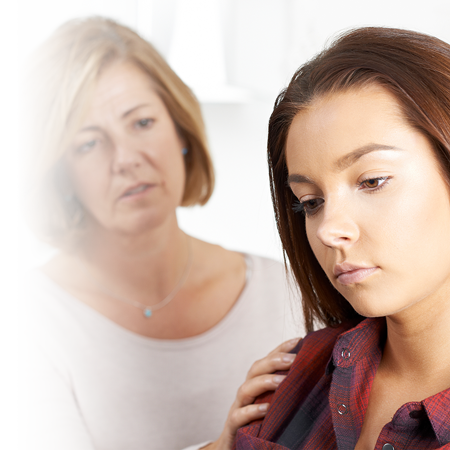The quest to be thin is common in this day and age. For some individuals, including those living with an eating disorder, it can turn into an obsession.
Who is affected by anorexia or bulimia?
Adolescence is a stage of life sometimes marked by self-doubt, uneasiness and transformation. This transition may sometimes be impeded by the onset of feeding or eating disorders (commonly known as eating disorders), sometimes associated with depression, anxiety and self-harm.
There are several types of disorders, but the most commonly known are anorexia nervosa, characterized by a refusal to eat, and bulimia, characterized by compulsive eating. These two seemingly opposite behaviours both reflect a significant malaise and result in psychological and physical problems that must be dealt with quickly. For additional information, read "Eating disorders: the importance of management".
Anorexia nervosa and bulimia mostly affect teenage girls and women under the age of 25. Only a small proportion (10%) of those affected are male. However, it should be noted that these disorders can also, although more rarely, occur in childhood or later in adulthood.
How can anorexia nervosa be recognized?
Anorexia nervosa may be difficult to detect at first. It is characterized by an obsessive desire to remain thin combined with severe dietary restrictions.
The manifestations of anorexia nervosa can vary considerably. Here are a few indications of the disorder: they
- lose weight significantly
- exercise excessively
- say they are fat when they are not really overweight
- never eat in your presence
- systematically refuse to eat certain foods
- count or weigh their food
- make negative comments about their physique: “My body is ugly, useless, a burden, etc.”, “I hate it…”, “I’m awful…”, etc.
- talk about wanting to “be just a spirit or soul”, wanting to rid themselves of their body
- isolate themselves and withdraw
As the disease progresses, it can have serious consequences, such as:
- extreme thinness
- an obliteration of the female form
- waste or loss of muscle
- lack of menstruation
- a drop in blood pressure
- a disturbance of heart rate
In the most severe cases, the person’s life may be at risk.
How can you recognize bulimia?
Bulimia is the consumption of a large amount of food in a short period of time, without enjoyment, hunger or satisfaction, accompanied by strong feelings of loss of control, guilt and self-loathing.
To compensate for these negative feelings and excess food intake, the person with bulimia may:
- self induce vomiting
- use laxatives and purgatives
- administer enemas
- fast
- exercise excessively
Here are a few other indications of bulimia: the person
- has significant weight variations
- has strong cravings for excessively salty, sweet or caloric foods
- has scratches and blemishes on their hands (a sign of self-induced purging).
- hurries to the bathroom after eating
- makes their weight and appearance the main topics of conversation
- is anxious, irritable and moody
- is constantly self-deprecating
- isolates themselves and is withdrawn
Like anorexia nervosa, bulimia can have consequences on the appearance and health of the affected person, such as:
- dental problems (caused by repeated vomiting)
- swelling of the parotid glands (salivary glands located under the cheeks)
- damage to the oesophagus, stomach and intestines, leading to certain digestive problems
- heart or kidney problems due to fluid loss and resulting disorders.
Winning strategies
If someone you love is struggling with an eating disorder, here are a few tips:
- Be patient. Overcoming anorexia nervosa and bulimia is a complex and lengthy process that requires sustained effort.
- Put aside judgments. Instead, try to understand the suffering behind the illness.
- Don’t try to reason with the person by trying to make them aware of their “shortcomings” or misperceptions. Eating disorders are often accompanied by a distortion of reality. Whether this seems odd to you or not, the person sees themselves as fat, even if they are not.
- Encourage the person to see a doctor, psychologist or any other healthcare professional who can make a diagnosis and help begin treatment.
Eating disorders have many faces. Knowing how to recognize them makes it possible to begin a healing process as soon as possible, which will gradually lead the affected person to regain their self-esteem and take control of their life. If someone you care about suffers from this type of disorder, your presence by their side on the road to recovery will provide a valuable asset.

